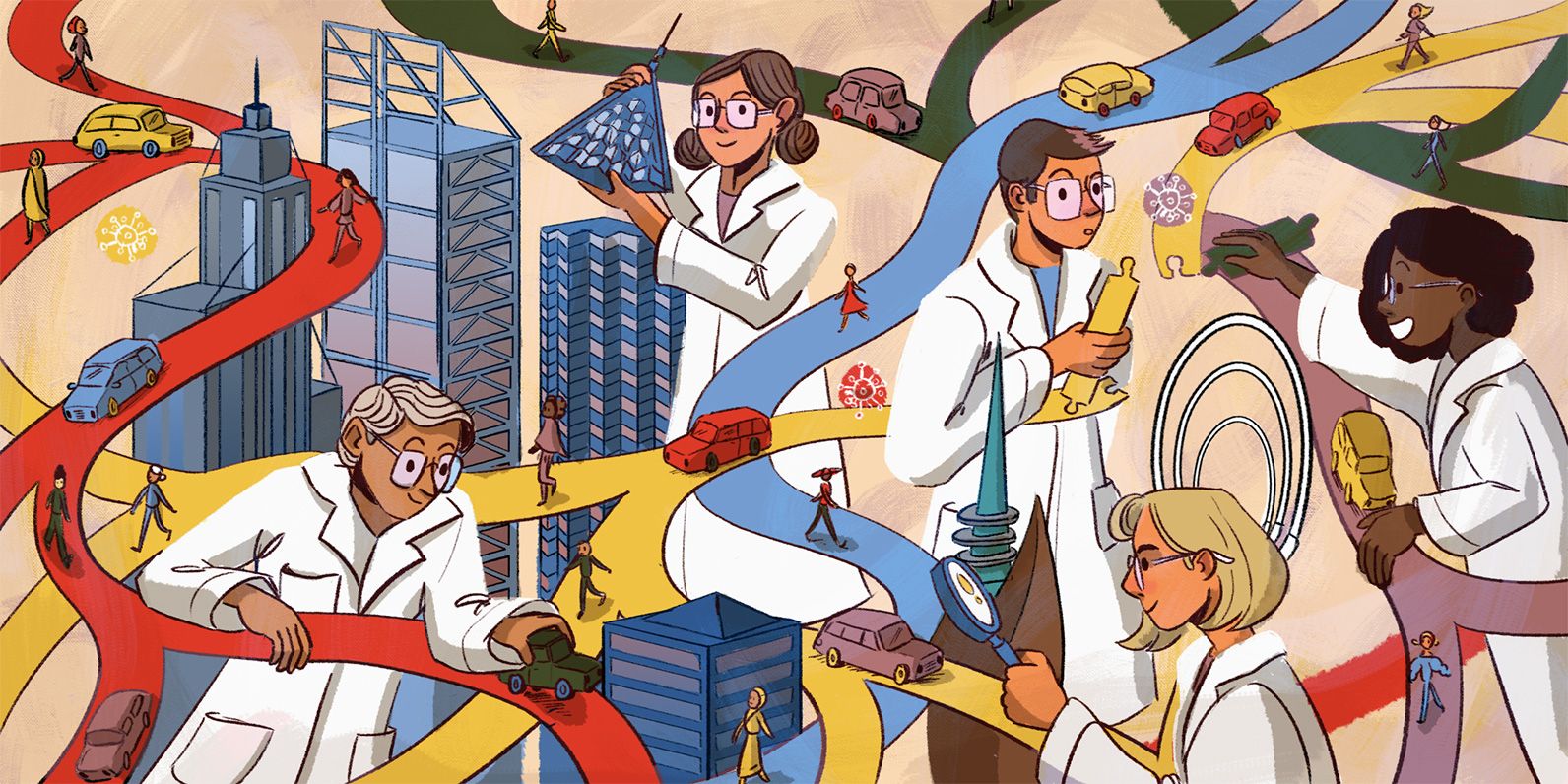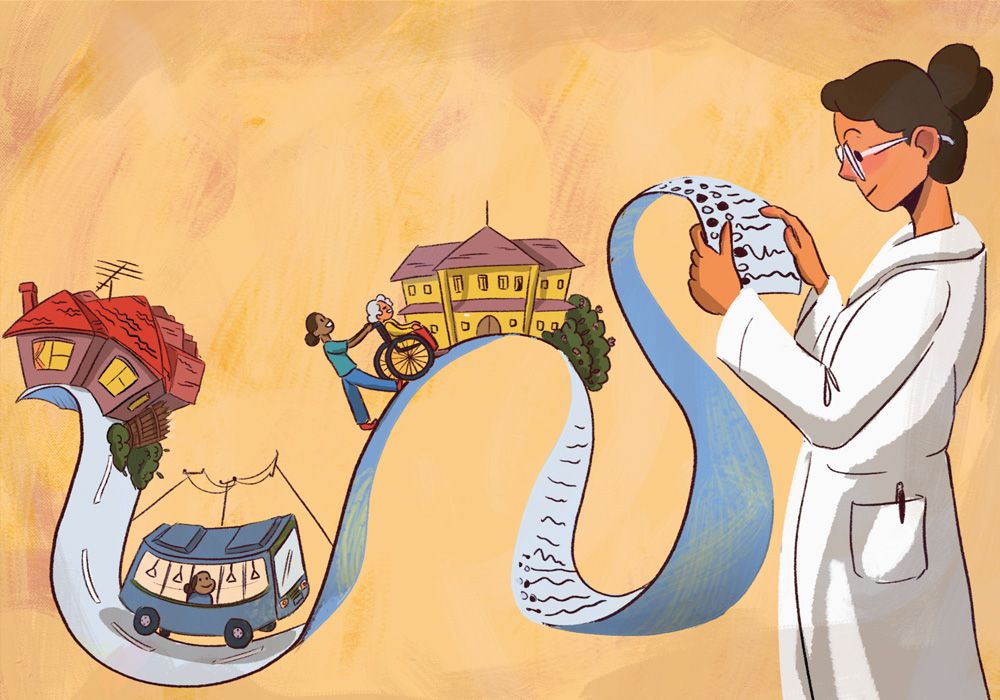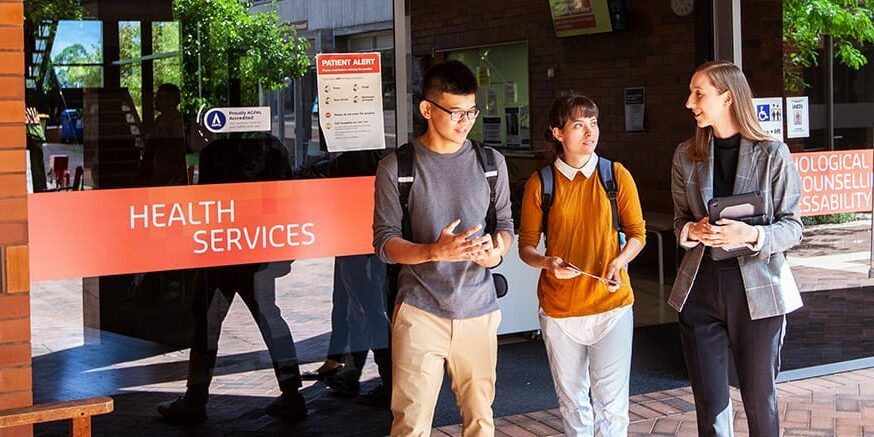Population data could be key to controlling a future COVID outbreak in WA
28/09/21. By Telethon Kids Institute.

Illustration by Curtin student Nina Dakin.
Perth researchers will use population data to help boost WA’s defences in the fight against COVID-19, developing modelling to build a clearer picture of how the virus could spread through high-risk populations.
Telethon Kids Institute and Curtin University Associate Professor Nick Golding and his team have been awarded a WA Future Health Research and Innovation Fund grant for the project Quantifying contact networks for COVID-19 outbreak preparedness.
The project will use detailed surveys of different population groups across WA to build a complete picture of how COVID-19 could spread within those groups and the risk of ‘spill-over’ to others. Associate Professor Golding says once that picture is complete, it could be used to predict which group the infection may spread to next.
“One of the big unknowns with this virus at the moment is around which groups of people it gets into and how quickly they spread it to one another, and that’s shaped by lots of factors – where they work, what they do during the day, the size of their households and how much contact they have with other people.”

Illustration by Nina Dakin.
“Having modelling like this would allow us to predict where the virus is likely to spread in the event of another outbreak in WA, allowing the Department of Health to hopefully contain it more quickly.”
Associate Professor Golding said the team would use many in-depth surveys to gather data about the behaviour and movements of specific groups of people, particularly those in high-risk jobs such as aged care, before using mathematical modelling to predict how an outbreak would spread in those communities.
“We will use code models to run various simulations for how the virus is most likely to spread through the population,” he says. “We’ll be providing that tool to the WA Department of Health so they can work out where to focus their efforts.”

Illustration by Nina Dakin.
Associate Professor Golding said reaching people in culturally and linguistically diverse (CALD) communities was crucial to the research.
“We know that 70 per cent of people who work as personal care attendants in aged care are from CALD communities, so they are a really important demographic in terms of how the virus could spread.”
The information gathered through the project will be provided in real-time updates to the WA Department of Health to help bolster its contact tracing arsenal.
This article was originally published here by Telethon Kids Institute on Thursday 4 February 2021, and has been republished with permission from the Telethon Kids Institute.
All original illustrations by Curtin student Nina Dakin (Bachelor of Design, Animation and Game Design). Explore more of her art here.

___
Explore more information featured in this article

Our Health Sciences community
As the biggest provider of healthcare professionals in WA, our Faculty of Health Sciences is one of the largest and broadest health faculties in the country, covering almost all specialties. Find out more about Health Sciences community.

